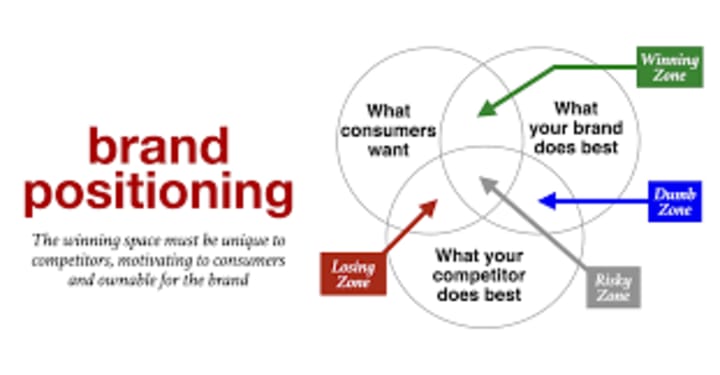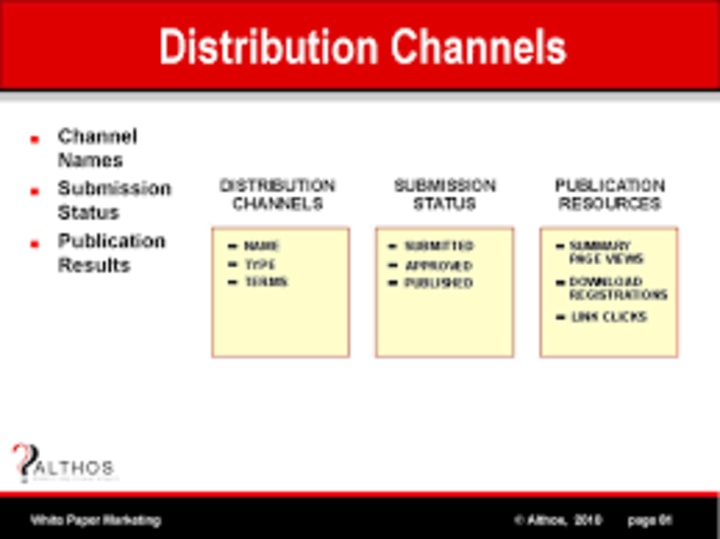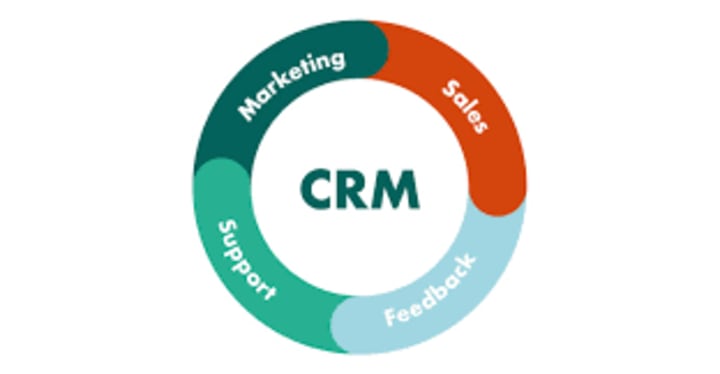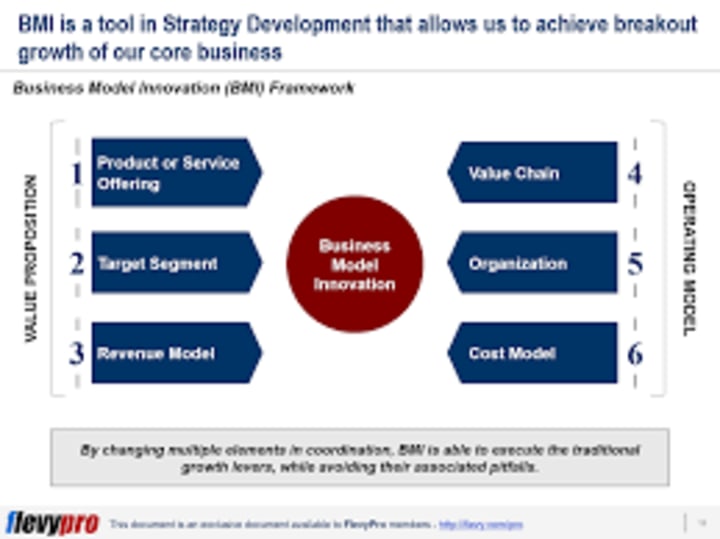Business & Marketing Strategy Masterclass
Business & Marketing Strategy Masterclass of the business techniques.

Business & Marketing Strategy Masterclass

1.Market Research & Analysis
2.Customer Segmentation & Targeting
3.Positioning & Branding
4.Product Development & Life Cycle
5.Pricing Strategies
6.Distribution & Channel Management
7.Promotion & Advertising
8.Sales & Customer Relationship Management
9.Competitive Analysis & Market Intelligence
10.Business Model Development & Innovation
1.Market Research & Analysis:
Market research and analysis is the process of gathering, analyzing, and interpreting data about target markets and competitors to inform business decisions. It helps organizations understand their customers, competitors, and industry trends to make informed decisions about product development, marketing, and sales strategies. There are several methods used in market research including surveys, focus groups, online analytics, and secondary research (such as industry reports and data).
The goal of market research is to gather information that will help a business identify opportunities and make informed decisions. This information can help businesses understand customer needs and preferences, identify market trends and challenges, and measure the impact of their marketing efforts. Market research can also help businesses evaluate their competition and understand the strengths and weaknesses of their products or services in comparison to their competitors.
Market research helps businesses understand their target audience, including demographic information such as age, income, and location, as well as their buying habits and behaviors. This information can be used to develop targeted marketing strategies and make product decisions that are more likely to resonate with target customers.
In addition to gathering information about customers and the market, market research can also help businesses identify new market opportunities. For example, research may reveal untapped market segments or new product categories that could be profitable for the business. This information can be used to inform new product development, expand into new markets, or re-position the business to better meet the needs of its target customers.
Overall, market research & analysis is a crucial component of business strategy and decision-making. By gathering and analyzing data about customers, competitors, and the market, businesses can make informed decisions that help them remain competitive and grow their business.
2.Customer segmentation and targeting:
Customer segmentation and targeting is the process of dividing a market into smaller groups of customers with similar needs or characteristics and then designing and implementing strategies to target these groups effectively. This helps organizations effectively allocate resources and tailor their marketing efforts to specific customer segments.
The first step in customer segmentation is to identify the characteristics that define different groups of customers. This may include demographic information (e.g. age, income, location), psychographic information (e.g. values, interests, lifestyle), and behavioral information (e.g. buying habits, customer loyalty).
Once customer segments have been identified, organizations can use this information to tailor their marketing efforts to the needs and preferences of each segment. For example, a company selling athletic shoes may segment its market into two groups: serious athletes and casual fitness enthusiasts. The company can then design specific marketing campaigns to target each group, such as promoting performance-enhancing features for serious athletes and comfort and style for casual fitness enthusiasts.
Customer targeting is the process of selecting the customer segments that an organization will serve and developing a marketing mix that meets the needs of these customers. Targeting helps organizations prioritize their resources and make decisions about where to focus their efforts, such as which products to promote, which channels to use, and how to allocate budgets.
By effectively segmenting and targeting customers, organizations can improve the efficiency and effectiveness of their marketing efforts, increase customer loyalty, and drive sales and revenue. Customer segmentation and targeting are ongoing processes.
3.Positioning & Branding:

Positioning and branding are interrelated concepts that help organizations differentiate themselves from competitors and establish a unique identity in the marketplace.
Positioning refers to how a brand is perceived in the minds of consumers relative to competitors. It is a key determinant of a brand's competitive advantage and is influenced by factors such as product features, quality, price, and customer experience. Effective positioning requires a deep understanding of the target market and the needs and preferences of customers.
Branding, on the other hand, is the process of creating and maintaining a brand's image and reputation. This involves developing a consistent brand message, visual identity, and brand personality that are consistent across all touchpoints with the customer. A strong brand helps customers recognize and differentiate a company's products and services and can increase customer loyalty.
Effective branding and positioning require a strategic and holistic approach. Organizations must consider all elements of their brand, including their mission and values, product offerings, customer experience, and marketing efforts, to create a consistent and compelling brand identity.
In summary, positioning and branding are critical components of a company's overall marketing strategy. By effectively positioning their brand in the minds of customers and consistently promoting a strong brand identity, organizations can differentiate themselves from competitors, build customer loyalty, and drive business growth.
4.Product Development & Life Cycle:
Product Development & Life Cycle refers to the process of creating and bringing a new product to market. It encompasses the entire journey of a product, from ideation and design to launch, growth, maturity, and decline.
The first step in the product development process is ideation and research, where the organization identifies potential product opportunities and performs market research to validate their idea. Next, the organization moves into the design and development stage, where the product is created and tested.
Once the product is ready for launch, the organization focuses on marketing and sales efforts to drive adoption and growth. Over time, the product may reach maturity, where sales begin to level off, and eventually decline as the product becomes obsolete or is replaced by newer products.
The product life cycle is an important concept for organizations to understand as it helps inform product development and marketing strategies. For example, during the growth stage of the product life cycle, the organization may focus on expanding distribution and building brand awareness. During the decline stage, the organization may focus on phasing out the product or repositioning it to extend its life cycle.
In conclusion, the product development & life cycle is a critical component of an organization's overall strategy. By understanding the stages of the life cycle and the opportunities and challenges associated with each stage, organizations can make informed decisions about product development, marketing, and sales efforts to drive growth and success.
5.Pricing Strategies:
Pricing strategies refer to the methods used by organizations to determine the price of their products and services. Effective pricing strategies help organizations maximize profits, increase market share, and stay competitive.
There are several types of pricing strategies, including cost-plus pricing, value-based pricing, and psychological pricing. Cost-plus pricing involves setting prices based on the cost of production, plus a markup to cover overhead and generate profit. Value-based pricing sets prices based on the perceived value of the product to the customer, rather than the cost of production. Psychological pricing involves setting prices at specific levels to influence customer perception and behavior.
Organizations may also use promotional pricing, such as discounts and special offers, to increase sales and drive traffic. Dynamic pricing, which adjusts prices in real-time based on supply and demand, is becoming increasingly popular in industries such as e-commerce and travel.
In conclusion, pricing strategies play a critical role in an organization's overall marketing and business strategy. By selecting the right pricing strategy, organizations can increase profitability, drive sales, and gain a competitive advantage in the marketplace.
6.Distribution & Channel Management :

Distribution & Channel Management involves the design and implementation of strategies for the distribution of products and services to customers. Effective distribution and channel management helps organizations increase market reach, improve customer access, and reduce costs.
Distribution channels refer to the various paths that products and services follow to reach customers. These can include direct-to-consumer channels, such as e-commerce, or indirect channels, such as wholesalers and retailers. Channel management involves choosing the right channels to reach customers, negotiating terms with channel partners, and managing relationships with these partners.
In designing a distribution strategy, organizations must consider factors such as customer needs, distribution costs, and the competitive landscape. For example, a B2B company might use a different distribution strategy than a B2C company.
In conclusion, effective distribution and channel management is critical for organizations looking to grow and succeed. By selecting the right channels and managing relationships with channel partners, organizations can increase market reach, improve customer access, and reduce costs.
7.Promotion & Advertising:

Promotion & Advertising are marketing activities that organizations use to communicate with customers and create demand for their products and services. They play a critical role in an organization's overall marketing strategy, as they help build brand awareness, generate leads, and increase sales.
Promotion refers to the use of various tactics, such as sales promotions, coupons, and contests, to generate short-term demand. Advertising involves the use of paid media, such as TV, radio, print, and online, to build brand awareness and reach a wider audience.
Effective promotion and advertising strategies are informed by a deep understanding of the target market, including their needs, preferences, and media habits. Organizations must also consider their budget and resources when designing their promotion and advertising strategies.
In conclusion, promotion and advertising are critical components of a company's overall marketing strategy. By effectively communicating with customers and building demand for their products and services, organizations can increase brand awareness, generate leads, and drive sales.
8.Sales & Customer Relationship Management:

Sales & Customer Relationship Management (CRM) refer to the processes and strategies that organizations use to manage their interactions with customers. Effective sales and CRM practices help organizations build strong relationships with customers, increase customer loyalty, and drive sales growth.
Sales refers to the process of selling products and services to customers. This can involve lead generation, qualification, and closing. Customer Relationship Management (CRM) refers to the practice of using technology and processes to manage customer interactions and data throughout the customer life cycle, from acquisition to retention and loyalty.
In practice, sales and CRM often overlap, as organizations use customer data and insights to inform sales strategies and build stronger relationships with customers. Effective CRM strategies involve the use of data and technology, as well as training and process development, to ensure that customer interactions are consistent and high-quality.
In conclusion, effective sales and CRM practices are critical for organizations looking to grow and succeed. By building strong relationships with customers and using data and technology to inform sales strategies, organizations can increase customer loyalty, drive sales growth, and improve overall business performance.
9.Competitive Analysis & Market Intelligence :

processes for data collection, analysis, and dissemination. This information can inform a company's marketing, product development, pricing, and sales strategies.
In conclusion, competitive analysis and market intelligence play a critical role in helping organizations stay ahead of the competition and succeed in the market. By continuously gathering and analyzing data and information about the competitive environment and market conditions, organizations can make informed strategic decisions and gain a competitive advantage.
10.Business Model Development & Innovation :
Business Model Development & Innovation involve the design and implementation of new and creative ways of creating and delivering value to customers. This can involve the development of new products, services, and business models, as well as the continuous improvement of existing offerings.
Business Model Development refers to the process of designing and testing new ways of creating and delivering value to customers. This can involve the development of new revenue streams, distribution channels, and customer segments. Innovation refers to the introduction of new and improved products, services, and processes that increase value for customers and create a competitive advantage.
Effective business model development and innovation strategies are informed by a deep understanding of customer needs and the competitive landscape. Organizations must also consider their internal capabilities and resources when developing new business models and innovations.
In conclusion, business model development and innovation are critical for organizations looking to stay ahead in the market. By continuously creating and delivering new and improved products and services, organizations can increase customer value, create a competitive advantage, and drive growth.






Comments
There are no comments for this story
Be the first to respond and start the conversation.